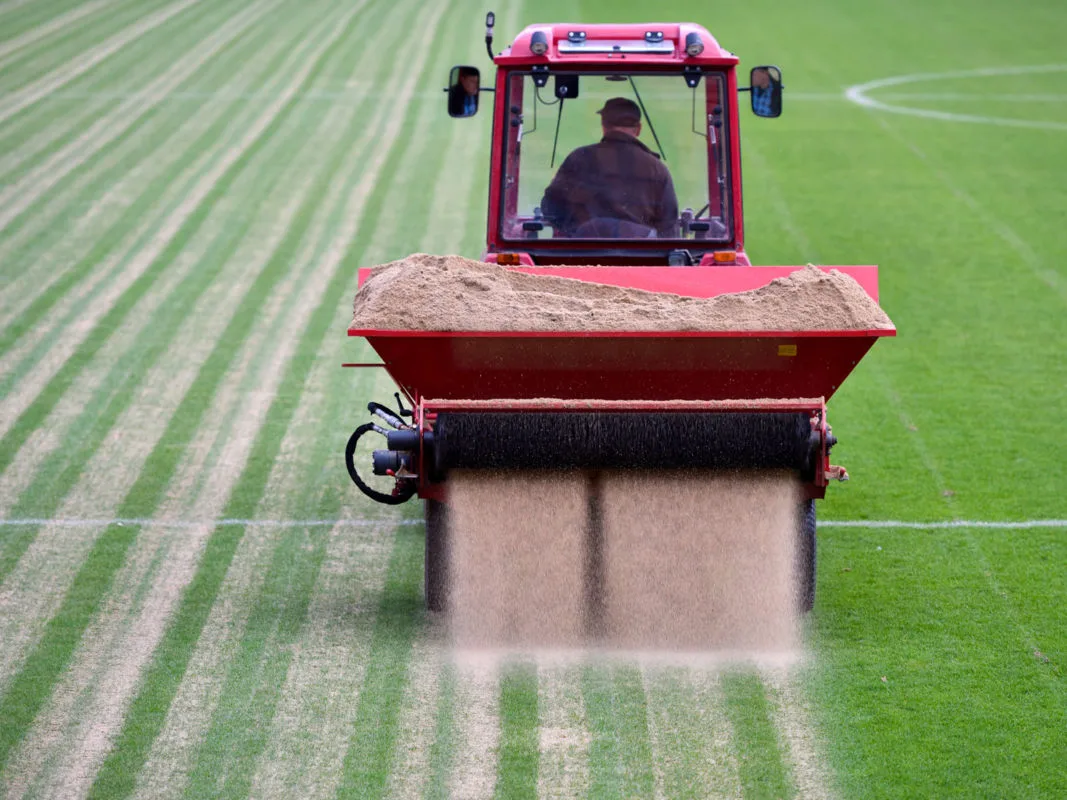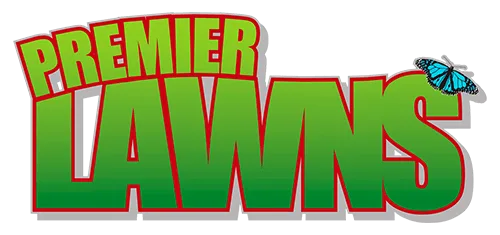Why do we topdress our lawns and which topdressing material is best?
Topdressing is something that greenskeepers and lawn enthusiasts carry out on a fairly regular basis to keep their lawns in tip top condition. It’s simply the practice of adding a shallow layer of material to the top of the lawn in order to improve either the playing surface or to gently tweak the condition of the soil beneath the lawn.
Where a lawn is maintained at a nice low cutting height using a cylinder mower it’s imperative that the surface is nice and level. Otherwise you can easily scalp any grass growing on hillocks and end up with a motley mix of colours and textures. Likewise if your lawn is used for sports such as golf, croquet or bowls, a level playing surface is a must. Any flaws in the surface will impact on the playing quality.
We greenkeepers use topdressing to level out minor imperfections caused by the natural movement of the soil beneath the lawn. But it also has other benefits, depending on the material you use.
- Level out minor lumps and bumps in the surface of your lawn
- Can help to control thatch
- Adds “heart” to the soil beneath your lawn
- Helps germinate new seed in an established lawn
- Introduces free draining material where soil is naturally a bit too water retentive
- Gives the gardener a great workout

Topdressing do’s and don’ts
DO choose your topdressing material carefully. Using the wrong type of material could do more harm than good.
DON’T Apply topdressing between October and March in the UK – it,s important that the grass is actively growing when you do this job.
DO scarify before applying topdressing, and hollow tine aerate too if you are addressing drainage issues
DON’T use topdressing as a substitute for scarification. Yes, it can help control thatch but it cannot clear a deep layer of debris.
DO be careful not to apply too much – you need to be able to see the sward once you’ve finished work.
DON’T mow your lawn too soon after applying topdressing – the grass will need time to recover. Let it grow to
DO water your lawn after topdressing. It helps the material settle and it helps the grass to recover from your intervention.
How to Topdress your lawn
Here’s a video showing Robbie topdressing a domestic lawn with sports sand. Why sports sand? Watch the clip to find out what governed his choice of topdressing material.
Which topdressing material should I use for my lawn?
Your choice of topdressing material should depend on what you are trying to achieve by this particular lawn care activity.
- In practical terms, it needs to be finely graded – so that it’s easy to spread and can filter down between the blades of grass. If you are trying to aid germination, finer particles give a better seed to soil contact.
- It should be reasonably dry – otherwise it will be impossible to spread.
- Topdressing must NEVER contain any herbicides, pesticides, weed seeds or any other nasties – source your topdressing material wisely!
Let’s take a look at the possibilities…..
Compost from the garden centre
Brilliant for adding substance to a soil that is a little too free-draining. Use after aerating and really brush it into the holes. Compost will help support the soil microbes that feed on the thatch layer. Which can be useful if your lawn is inclined to grow a lot of thatch. Look for peat free compost (see below). Garden compost can be a little inconsistent for topdressing. If you want to give it a go, make sure it is really well rotted and free from weed seeds or roots.
Screened topsoil
Again, a useful topdressing material and very good for levelling surfaces. The finer the screening the better 3mm is ideal. Really finely screen topsoil is free flowing and won’t leave stones on your lawn.
Sports sand
If you’re going to use sand, avoid builders sand or plasterers sand these are easily compacted and will actually impede drainage not improve it. Grains of sports sand are rounded and so there will always be air pockets between them. Be aware that sand is inert. It won’t add nutrients to your soil, neither will it nourish soil microbes. A good quality sand does contribute towards a great playing surface though.
Peat
NEVER NEVER NEVER use peat based products on your lawn. Peat is funny old stuff when it comes to water management. If it dries right out, it’s really hard to re-wet. If it gets too wet, it turns into a slippery, slimy bog. Plus, peat takes millions of years for nature to create and valuable wildlife habitats and carbon sinks are destroyed when it is harvested.
Proprietary topdressing
There are lots of topdressing products on the market. For most lawns, I would recommend a 70/30 blend of sports sand and topsoil. That’s 70% sand to aid drainage and 30% topsoil for some of the lovely nutrients that will support healthy grass growth.
How much topdressing will I need?
As a rule of thumb, aim to add a layer of topdressing around that covers no more than 50% of the length of your grass. So if you maintain your fine lawn at 6mm – add 3mm of topdressing. If your family lawn is normally 20mm high – add 10mm of topdressing.
10 mm would be my absolute maximum amount for any lawn and if I’m honest, it would take a lot of energy to distribute that amount of material. Better to look after your back and stick to shallow layers. You can always repeat the process in 6 months time.
Calculate your needs by multiplying the length of your lawn by its width, and then multiply that figure by the depth of topsoil you want to use. Be careful not to mix up your units of measurement or you could get in a muddle.
Lets say that your lawn is 12 metres long by 8 metres wide and you plan to add 6mm of topdressing.
Start by converting all of your measurements into metres. 6mm is 0.006 metres
12m x 8m gives you an area of 96 square metres.
Multiply that by the depth
96 x 0.006 = 0.58 cubic metres in other words, just shy of a dumpy bag full of material….that should be enough shovelling to give you a really good workout.
Links to more information about topdressing and lawn care
At Premier Lawns we love to help people to create and maintain the lawn of their dreams. Whether that’s an immaculately manicured ornamental lawn, a family play area or a wildlife friendly green sward, we’re here to answer all of your questions. Use the links below to access our brilliant lawn care libraries, or click here to contact us.
Join our Facebook community for unbiased, helpful advice from other lawn lovers
Follow Premier Lawns on YouTube for weekly lawn care news and tutorials
Find out how to level a lumpy lawn
